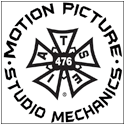
Sony Pictures is making a significant shift towards incorporating generative artificial intelligence (AI) to streamline and reduce costs in film and television production. Chief Executive Tony Vinciquerra, speaking at an investor conference in Japan, emphasized the company’s strong focus on AI, aiming to integrate the technology to enhance efficiency in their production processes.
“We’ll be looking at ways to use AI to produce films for theaters and television in more efficient ways, using AI primarily,” Vinciquerra said.
This move comes amid ongoing negotiations between Hollywood’s major crew union and top studios on a new contract set to expire on July 31. Similar to previous actors’ and writers’ strikes, the use of AI has emerged as a pivotal point in these negotiations, with unions advocating for protections against potential job displacement caused by AI technologies.
Vinciquerra’s comments suggest that while studios are keen to expand their use of AI, they are currently limited by existing union contracts. “The agreements that came out of last year’s strikes and the agreements that will come out of the IATSE and Teamster [negotiations] will define roughly what we do with AI,” he noted.
The backdrop of these developments includes rising anxieties within Hollywood regarding AI’s potential to undermine labor. For example, DreamWorks founder Jeffrey Katzenberg predicted last year that AI could cut the cost of animated movies by up to 90%, drastically reducing the manpower and time needed to create world-class films.
REELated:
A recent study surveying 300 entertainment sector leaders revealed that AI is already impacting jobs in Hollywood, with three-fourths of respondents indicating that AI tools supported job elimination, reduction, or consolidation. The study found that roles like voice actors, concept artists, and visual effects workers are particularly vulnerable.
Cinematographer Kathryn Brillhart, visual production supervisor for films such as Fallout, Rebel Moon, and Black Adam, highlighted AI’s potential to enhance visual effects (VFX) workflows. Speaking at the “AI on the Lot” conference, Brillhart said, “It’s advancing the craft. I can teach myself skills at a faster rate than I ever have before. I can think about workflows in different ways.”
Sony Pictures’ push towards AI comes on the heels of several underperforming releases, including Madame Web, which failed at the box office, and Morbius, a critical bust that nonetheless grossed $170 million worldwide. These setbacks underscore the studio’s need to find more efficient production methods, making AI an attractive option.
As the entertainment industry continues to evolve with technological advancements, Sony Pictures’ adoption of AI reflects broader trends in leveraging technology to reshape traditional workflows and production strategies. The ongoing union negotiations will likely play a crucial role in defining the extent and manner of AI’s integration into Hollywood’s creative processes.
Follow us on Facebook, X and Instagram










